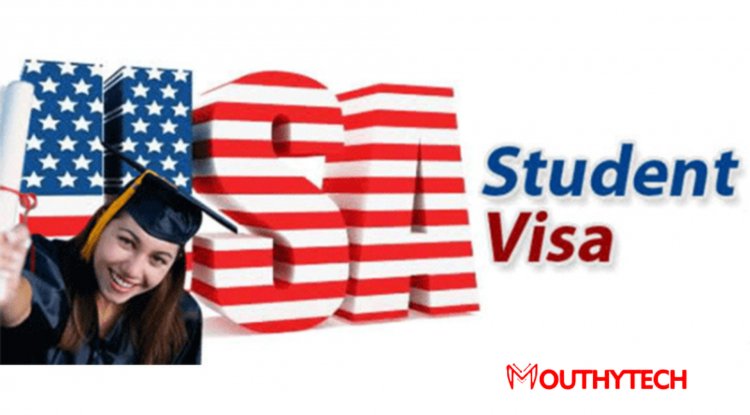Types of Education in Italy
Education can mean different things to different people around the world. Some people see the education system as classroom training, while others might see it as a life-changing experience.
Teachers and students might also have different educational perspectives, as do parents. These perspectives are condensed into three primary types of education.
However, Modern education is now a structured system required and supported by the state in keeping with Plato’s philosophy of education. Education presently is a fundamental right for children in most (if not all) parts of the world. Regardless of parents’ financial status, a child is now required to attend school at a certain age (in the United States, by the age of 6). While private schools are available for children whose parents can afford them, public schools accommodate students of all backgrounds.
What is education?
Education is an exercise with specific goals, such as the transmission of knowledge and the development of skills and character traits. These objectives may include cultivating intelligence, rationality, generosity, and integrity.
Diverse researchers emphasize the significance of critical thinking to differentiate education from indoctrination. Others prefer a value-neutral definition of the term education. Some theorists insist that education must result in an improvement of the student, while others prefer a value-neutral definition.
In a slightly different sense, education may also refer to the mental states and dispositions of educated people rather than the process itself. The original purpose of education was to transmit cultural heritage from one generation to the next.
Today's educational objectives include many novel concepts, such as the emancipation of students, modern-day skills, empathy, and complex vocational skills.
Education brings a natural and lasting change in an individual’s reasoning and ability to achieve the targeted goal.
It facilitates us to investigate our considerations and thoughts and makes us ready to express them in various shapes.
Education is the main thing that encourages us to distinguish between right and wrong because in the absence of education, we can’t do what we need or we can’t achieve our goals.
Straightforwardly, we can say, “education is the passage to progress.” It is additionally the way to our fate as achievements can only be accomplished when individuals have information, aptitudes, and frame of mind.
Types of Education:
Education forms a holistic and significant part of any individual’s life. It is the process of gaining or imparting knowledge that aids in building a proficient personality, ultimately improving the quality of life.
Education is not only the knowledge contained in books but is a much broader concept that helps in the enhancement of the skills and mental abilities of human beings. It goes beyond the classrooms, schools, and colleges. Education focuses on the development of the academic, psychological, spiritual, and physical capabilities of a person. An uneducated person faces several difficulties in life. So, keeping all these points in mind, boarding schools in Dehradun make their students aware of all types of educations. And groom their overall personality. School in Dehradun works diligently on educating their girl students in the best possible way.
Education can be gained in several forms through schools, life experiences and extra-curricular activities. Education has no specifications or boundaries assigned to it. Therefore it can be broadly classified under three categories:-
- Formal Education
- Informal Education
- Non-formal Education
What is Formal Education?
Formal education is a structured and systematic form of learning. This is the education of a certain standard delivered to students by trained teachers. To ensure formal learning is standardized and all learning institutions (e.g., schools, colleges, universities, etc.) comply with these standards, formal education in a country is governed by organizations.
In the case of the US, the Department of Education oversees formal education in all states. However, there are school districts and school boards to oversee schools on a smaller scale to handle problems that may arise in schools that the Department of Education doesn’t necessarily have to handle themselves.
Formal education is classroom-based, meaning everything a student learns comes from books and other educational materials with the sole purpose of educating students. All teachers are trained and licensed to teach children, and they’re the same teachers the students will see every day to keep their education and training consistent.
Attendance is mandatory and non-optional for children ages 17 and below. If a child fails to show up to class for several days in a row, they may be considered truant. Because it is mandatory, they may be sent to juvenile centers or counseling. Parents may also be charged if they fail to do their duty as a parent and send their children to school. This can result in fines or other penalties for the parents.
Levels of Formal Education:
The structure of formal education is divided into four types depending on a student’s ability to understand information. At a young age, students learn the basics of general knowledge, and as they reach the end of mandatory formal education, they learn more complex facts. After graduating, they can take further education in a specialized field.
Preschool:
Also known as Italy early childhood education, children ages 3 to 6 learn the basics such as reading, writing, counting, and more. While some educational systems in the world require children to attend all preschool levels, in others, it is not necessary as long as children enter primary school capable of reading and writing.
Primary School:
Primary school deals with the first few years of education for children. During this stage, students learn the fundamentals of reading, math, and other basic levels of education. It is also known as grade school.
Secondary School:
Secondary school is also known as high school. It is divided into lower secondary education, which deals with more advanced general knowledge of the subjects, and upper secondary education, which focuses on education relevant to employment after mandatory education. After graduating, students can opt to find employment with their knowledge, or they can seek further education specializing in their field of choice.
Post-secondary School:
All optional formal education falls under post-secondary education. These include undergraduate and graduate programs, law school, medical school, vocational school, community college, and more. These are generally provided to help students seek education for specialized fields they want to work in. Still, some people also attend simply because they are interested in further studies. The highest level of education one can pursue is post-graduate education.
You might notice that you have taken at least one form of formal education in your life. Making formal education mandatory ensures that everyone is literate and intelligent enough to make their own decisions and choose their field to work in once they become adults. So, if you’re interested in further education or want to know where the formal education path will lead, at least you have a guide on what you can do to make your educational goals happen.
What is Informal Education?
Informal education, unlike formal education, does not have the structure and levels that formal schools have. It’s more natural and spontaneous, meaning the information you learn through this form of education comes from learning from experience. This range from visiting places like museums, libraries, and other educational facilities that aren’t traditional schools or simply looking at scenarios that allow a person to learn important information.
For example, formal education can teach you about fire and physics and, in more advanced classes, thermodynamics. But informal education is when you see a person burning their hand when they touch a pot handle without a potholder and you learn that the heat from the stove transferred to the pot handle, so you should be careful when you handle your cooking ware.
That’s not to confuse formal and informal with a third type of education: non-formal. Non-formal learning doesn’t always have the structure of formal education but isn’t as spontaneous as informal education. Examples include after-school organizations, non-credit education courses, seminars, and conferences.
Characteristics of Informal Education in Italy:
Unlike formal education, where learning is timed and scheduled, informal learning is much more spontaneous. People of all backgrounds can undergo informal education even before they enter preschool as long as they are currently learning from everything around them.
Informal learning has no guidelines, curriculums, or standards. While lessons like teaching your child how to brush your teeth have some acceptable standards, there’s no right or wrong way to teach your child which part of your teeth to brush first. And because there is no curriculum or standardized tests, it is difficult to quantify or put to test how well a learner understands – it’s either they understand or they don’t.
Because informal learning isn’t mandatory, people who learn have to want to learn how to do so. If you teach a child how to tie a shoelace, if they aren’t interested to learn how to do it on their own, it can be difficult to get them to remember how to do it.
Informal learning can come from a licensed teacher if they teach you something outside of the curriculum, but under informal education, anyone can be a teacher regardless of credentials or whether or not they have a teaching license. In fact, it’s most likely that your first informal teachers are your parents and the people you lived with growing up.
And unlike formal education, which stops at a certain age or until you graduate or decide to leave an educational institution, you can continue learning informally. Even fully-grown middle-aged adults can continue to benefit from informal learning as long as they are willing to learn for their own benefit. For example, an older person learning how to use a touchscreen phone from a younger person is a type of informal learning setting. Or a person who asks for directions is another type of informal education.
What is Non-formal Education:
It refers to adult basic education, adult literacy education, or skill development. It can take different forms of learning, which are consistently and systematically provided to develop a particular skill or ability in an individual.
However, non-formal education is any organized educational activity outside the established formal system, whether operating separately or as an essential feature of some broader activity intended to serve identifiable learning clienteles and objectives.
This type of education is highly flexible and includes a wide range of activities. Some examples may be fitness programs, community-based adult education courses, free courses on different platforms, etc.
Characteristics of Non-Formal Education in Italy:
- It is well-planned and does not need any school system.
- A participatory learning system
- It is an open-ended educational system
- No need for structured courses and curriculum
- Age, Time, and curriculum flexibility
- Involvement of both public and private sectors in the process
- It is not necessary to conduct exams regularly
- Credentials like certificates and awards are not necessary to be awarded
- Self-learning is appreciated
Examples of Non-formal Education in Italy:
- Sports programs organized by community organizations
- Non-credit adult education programs
- Computer and Language Classes in a Community
- Online free courses
Bottom Lines:
"types of Education in Italy" is an article that identifies the types of education in Italy.
The article further explains the meaning of education, the types of education in Italy, formal education and its characteristics, informal education, and non-formal education.
What's Your Reaction?













